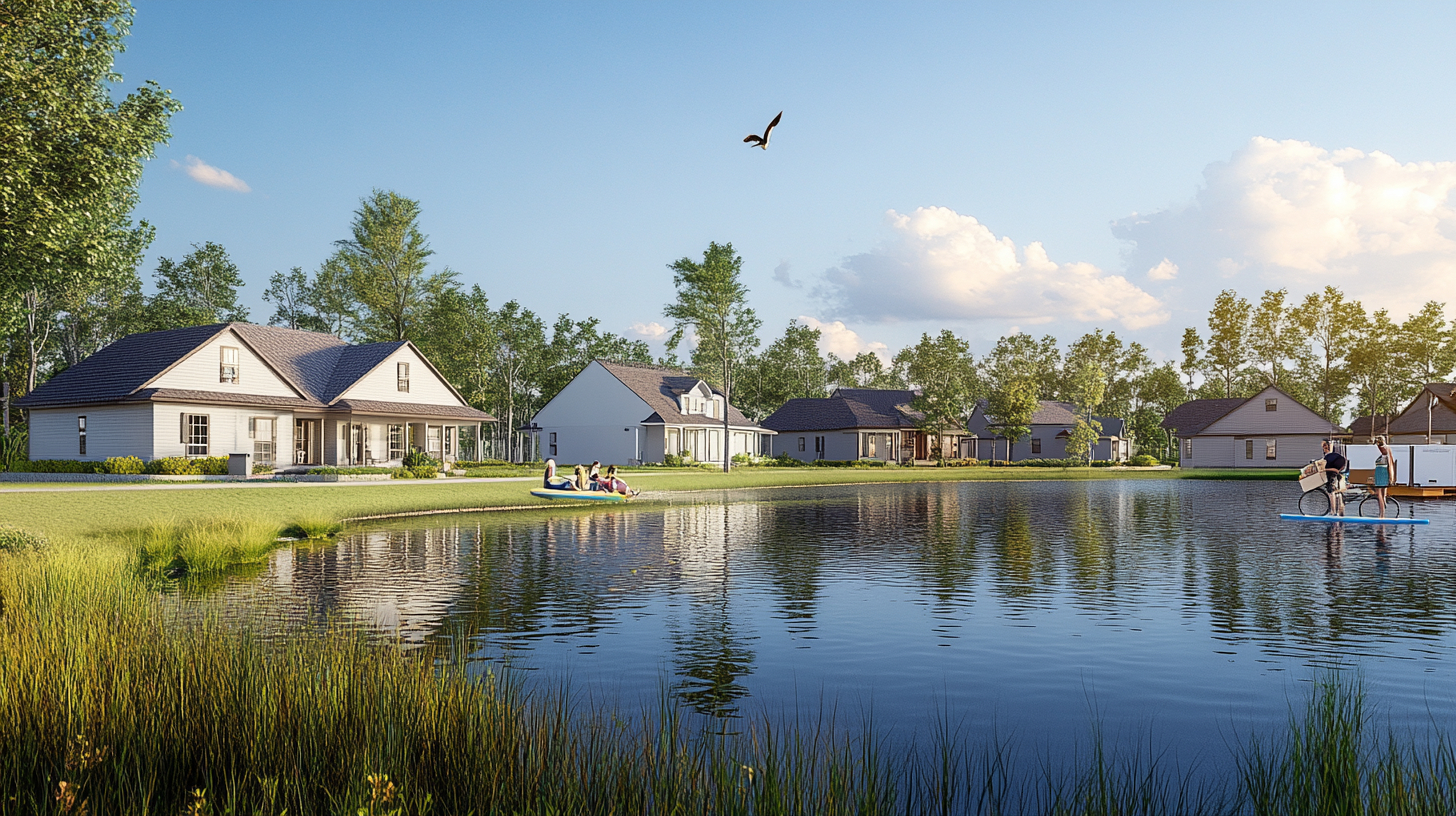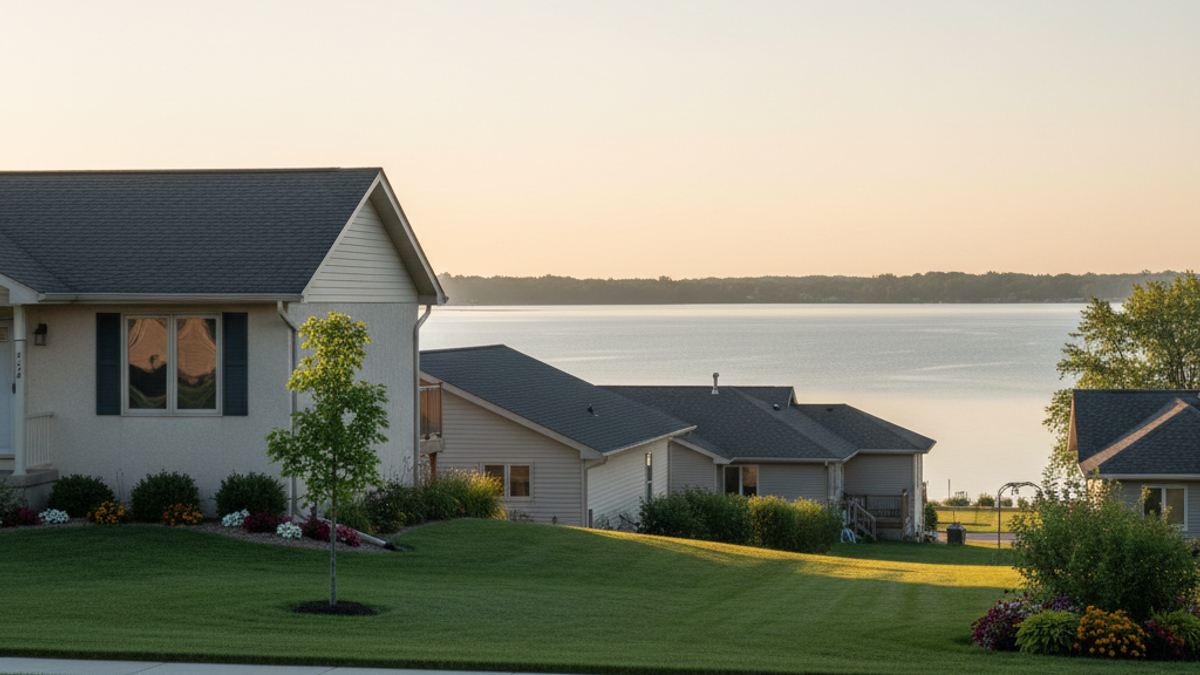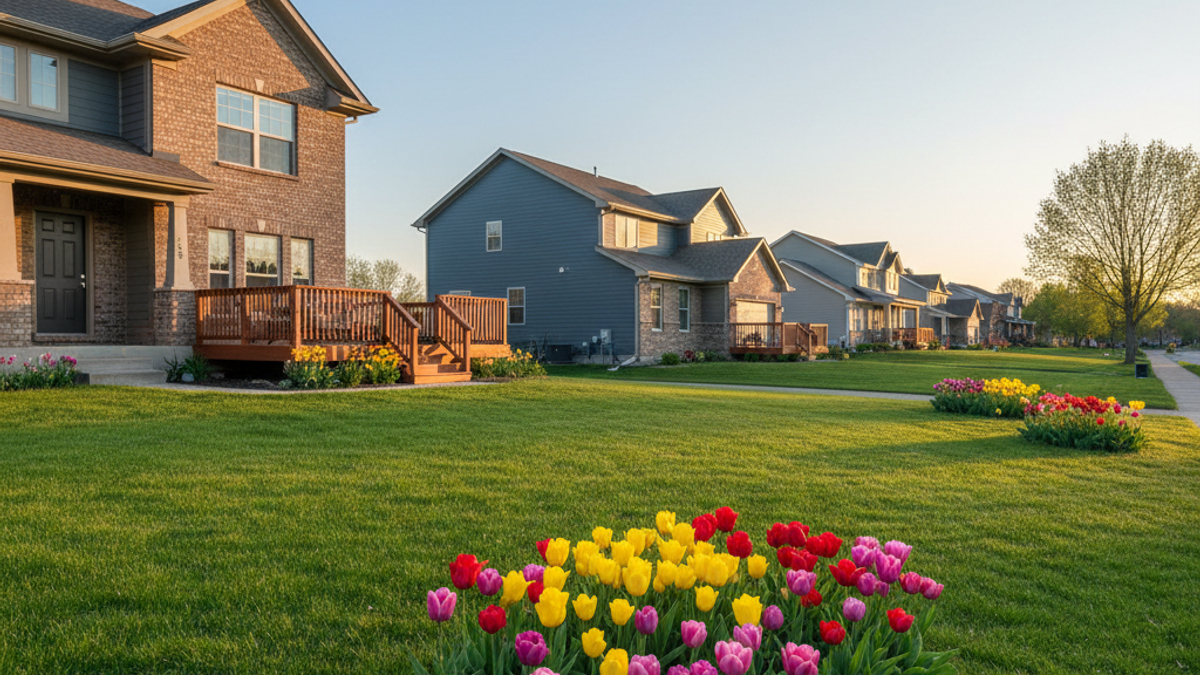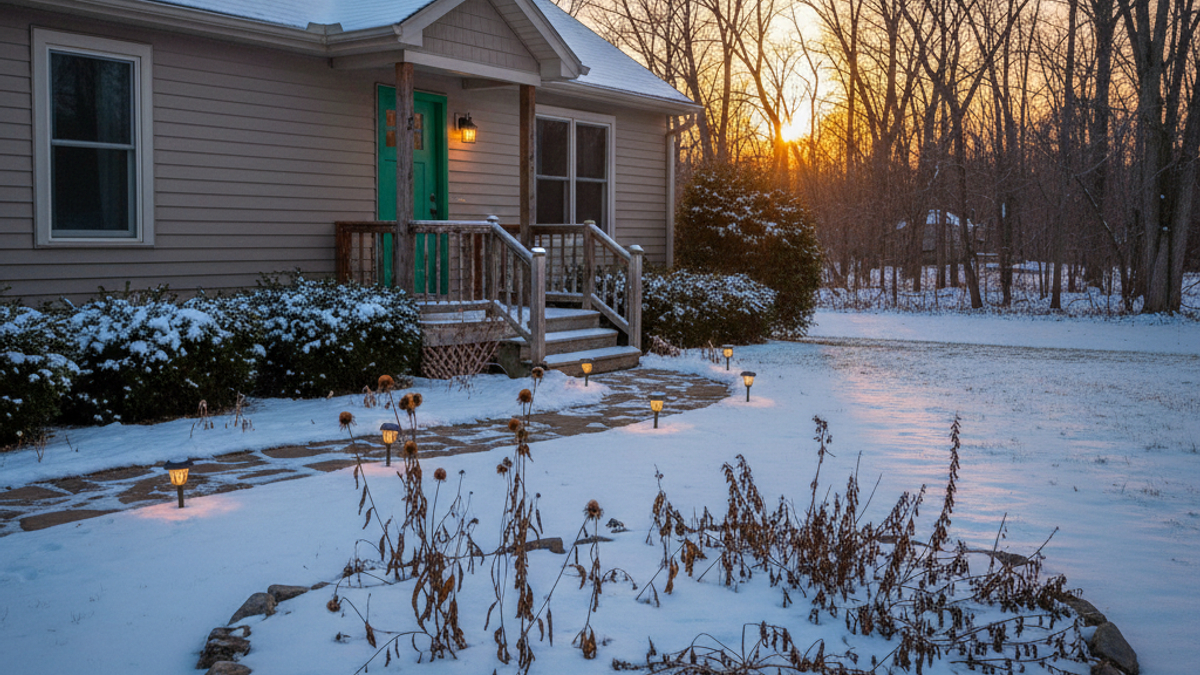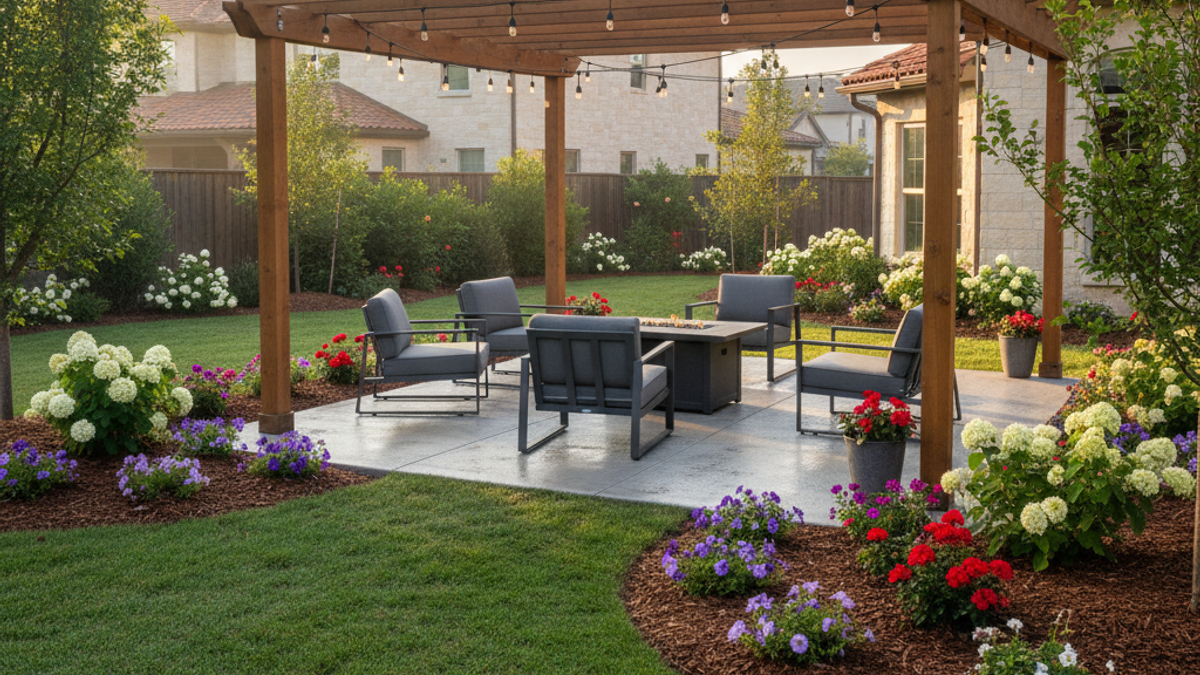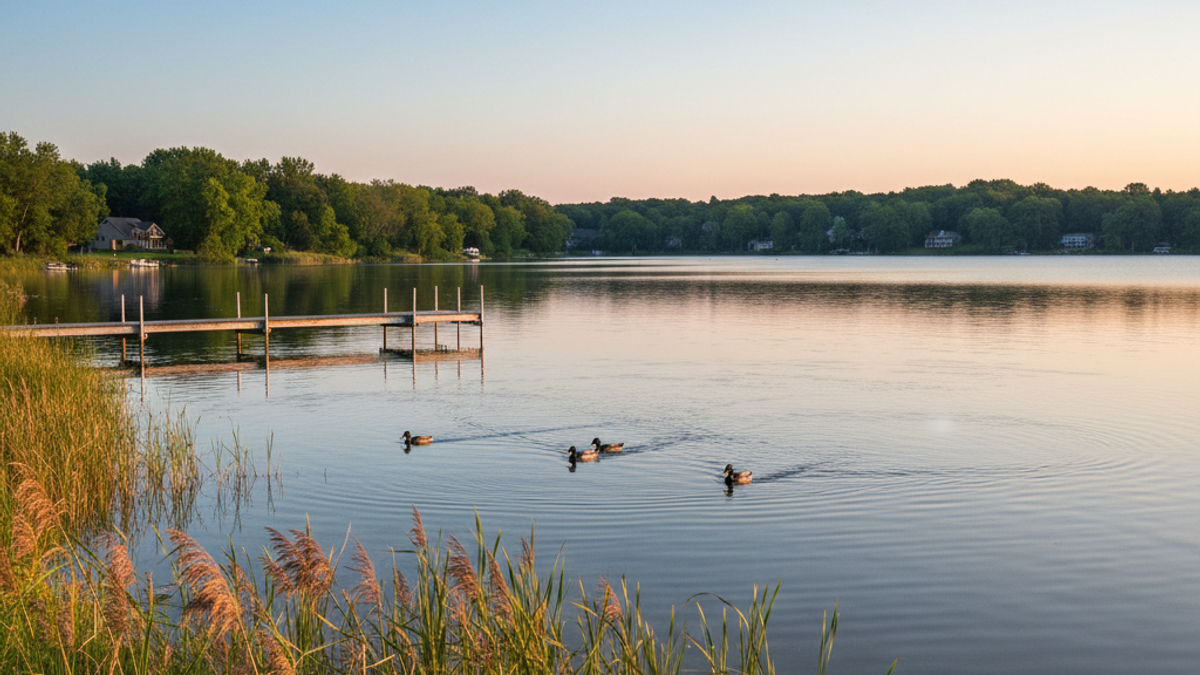First, Why Does Timing Even Matter?
Picture this. Two identical ranch homes come up for sale on Yahara Drive. One lists in late February while snow still coats the curb. The other pops in early June as Lake Monona finally looks Instagram-worthy again. Same beds, baths, and square footage, yet the June house closes for twenty-four grand more. The only real difference was timing.
That kind of price gap isn’t a one-off. In Monona, as in most of Wisconsin, seasonality quietly bullies both your budget and your stress level. Catch the market when listings peak? You’ll have options but you’ll fight off half the county. Slip in when demand chills? Sellers suddenly answer your calls instead of ghosting you.
Let’s unpack how it all shakes out across the calendar so you can pounce when conditions feel right for your life, not just your lender’s spreadsheet.
What Pushes Monona Prices Up or Down?
Before we slice the year into seasons, you deserve to know the hidden levers behind each swing. Four matter more than the rest.
- Weather that actually lets you tour. A Madison-area January can sink to eight degrees. Buyers stay home, sellers wait, inventory shrinks. Come April, driveways thaw, lawns green up, and everyone races to show off their fresh mulch. Prices follow the foot traffic.
- The school calendar. Roughly sixty percent of Monona buyers either have kids in the highly ranked Monona Grove School District or plan to. They need to be under contract by early July if they want little Ava enrolled by September. That deadline adds dollars to May and June offers.
- Interest-rate chatter. When the Fed hints at a hike, local buyers stampede to lock rates before the increase hits. Mortgage data from three Madison lenders shows a fifteen percent spike in preapprovals in the sixty days before every rate jump since 2020. More preapprovals equal more bidding wars.
- Lake-effect lifestyle. Monona’s shoreline is its superpower. Waterfront or even water-peek homes list more often in late summer when sellers can flaunt that kayak-ready backyard. If a pier matters to you, July and August are your window. If you are fine without lake access, dodge those months and save cash.
Season-by-Season Breakdown
Spring: March through May
Spring in Monona is equal parts crocuses, potholes, and open houses.
Why buyers love it
- The listing count triples between mid-March and Memorial Day. More choice means you can be picky about driveway length or that pesky north-facing backyard.
- Inspections are easier when the roof is no longer buried under snow. You see issues before writing the big check.
- Rates often dip as lenders roll out “spring market” promos to juice volume.
Why spring can punch you in the gut
- Median sale prices peak. According to South Central Wisconsin MLS, Monona single-family homes closed for an average of $469,000 last May, roughly seven percent higher than the yearly mean.
- Multiple offers are the rule, not the exception. Agents report four to six offers on anything under half a million.
- Closing timelines compress. Sellers want everything wrapped by June so they can move before swim lessons start. Rush fees on appraisals stack up fast.
Verdict
Spring is perfect if you crave inventory and have the stomach for bidding wars. Not ideal if you need breathing room on price.
Summer: June through August
June feels like spring on steroids. By July the frenzy cools just enough for negotiation to sneak back in.
The upside
- You still get solid listing volume. Roughly one in three homes listed in late June will reduce price if unsold by the second week of July.
- Long daylight hours mean showings can happen after work. Less PTO burned.
- School buyers who missed their window start to panic. If you keep calm, that panic can work in your favor on homes that languish.
The downside
- Lake-adjacent listings siphon attention and dollars. Sellers know sunsets over Lake Monona sell the dream, and they price as if every buyer owns a ski boat.
- Heat and humidity turn attic inspections into a sweat lodge. Some buyers skip the follow-up, only to discover mold in October.
- Movers are booked solid. Expect premiums of twenty to thirty percent on weekend slots.
Verdict
Early summer is pricey, late summer slightly less so. If your non-negotiable is backyard BBQ season in your new place, bite the bullet. Otherwise circle back in fall.
Fall: September through November
Leaves change, prices drop, and Monona calm returns.
Why fall quietly rocks
- Price per square foot slides about five percent from August highs, based on a five-year Dane County average.
- Competition thins. Families are back in school routines, relocation buyers aren’t under corporate moving deadlines, and investors focus on year-end tax strategy instead of flips.
- Sellers who listed in summer now stare at the first frost warning and a ticking clock. Lowball offers no longer get laughed out of the room.
The catches
- Total listings shrink by a third. If you want a mid-century ranch with an attached greenhouse, you might wait another year.
- Daylight fades fast. Late afternoon showings can feel like night tours. Bring a flashlight for crawlspaces.
- Snow flies early some years. Last October saw two inches before Halloween. An unexpected white lawn can spook second-time showings.
Verdict
For most buyers—especially first-timers—fall strikes the sweet spot between price and stress. You sacrifice variety but gain negotiating leverage.
Winter: December through February
The hush is real. Even the squirrels look like they called in sick.
What makes winter underrated
- Average sale price can fall ten percent below July’s peak on comparable properties.
- Sellers left on the market usually have a real need to move. Job relocation, estate sale, divorce. Motivation is your friend.
- Mortgage officers twiddle their thumbs. They chase your business, not the other way around. Rate perks often appear in the final weeks of each year.
What can go sideways
- Inventory hits rock bottom. You may tour three houses all month.
- Snow hides rooflines, drainage issues, and patio cracks. Home inspectors do their best but can’t see through ice dams.
- Moving vans hate sleet. Factor in weather padding when scheduling closing dates.
Verdict
Winter is the bargain hunter’s playground. Just know you might be buying the only place that fits half your checklist until spring.
But Wait, What About You?
No calendar can trump your personal timeline. Below are the questions I force every client to answer before we even peek at Zillow.
1. How secure is your job for the next two years?
If your company whispers “reorg” every quarter, you want maximum liquidity. That usually means buying when prices dip, which points to fall or winter.
2. Do school boundaries drive the move?
Parents of incoming kindergarteners often panic-buy in May. Yet Monona Grove allows mid-year transfers if space exists. Check with the district. You might gain price flexibility by closing in November instead.
3. Are you sitting on a lease break fee?
Many apartment complexes waive penalties from December to February because vacancy rates soar. Pair that with winter’s buyer leverage and you double dip on savings.
4. Is this a forever home or a five-year stepping-stone?
Short-term owners care more about resale timing than purchase timing. If you plan to sell again in spring 2030, buying in fall 2025 lines up perfectly to ride that next peak.
The 2025 Crystal Ball
Nobody owns a flawless sphere, but we can read the tea leaves.
- Madison’s tech sector keeps recruiting. Exact Sciences, Zendesk, and Fetch Rewards signed leases for an extra 300,000 square feet combined. More jobs usually equal more buyers.
- Interest rates are projected to wobble between 5.75 and 6.5 percent based on Freddie Mac forecasts. That is stable enough for lenders to roll out nontraditional products aimed at first-timers—think 2-1 buydowns or adjustable loans with caps.
- New construction inside Monona remains rare because vacant land vanished decades ago. Supply constraints will prop up values even if national headlines scream slowdown.
- Remote-work fatigue has nudged some downtown Madison condo owners toward Monona’s quieter streets. Expect a modest rise in move-up buyers attracted to larger yards.
So what does that mash-up mean?
If rates slide under six percent, spring 2025 could be another feeding frenzy. If they stay closer to six and a half, buyer demand should balance out, keeping fall 2025 the best mix of fair prices and manageable competition.
Quick Reference Cheat Sheet
- Biggest selection: April to early June
- Lowest prices: January and February
- Best shot at negotiation without settling for the last house on Earth: Late September to mid-November
- Most lakefront listings: July and August
- Friendliest lender promos: Last two weeks of December
Keep it bookmarked. You’ll thank yourself later.
Ready to Make Your Move?
Here is the real secret. The best time to buy a house in Monona is the moment you feel financially solid, emotionally steady, and armed with facts, not hype. Use the seasonal patterns to nudge the odds in your favor, but do not let a calendar box you in.
Run the numbers with a local lender. Drive the neighborhoods at dusk when porch lights flick on. Talk to residents at Winnequah Park about traffic shortcuts. Then pick your window—spring buzz, fall calm, or the frozen offseason—and step in with confidence.
When you do, give me a shout. I’ll have the coffee ready and a game plan that fits your timeline, not the other way around.

